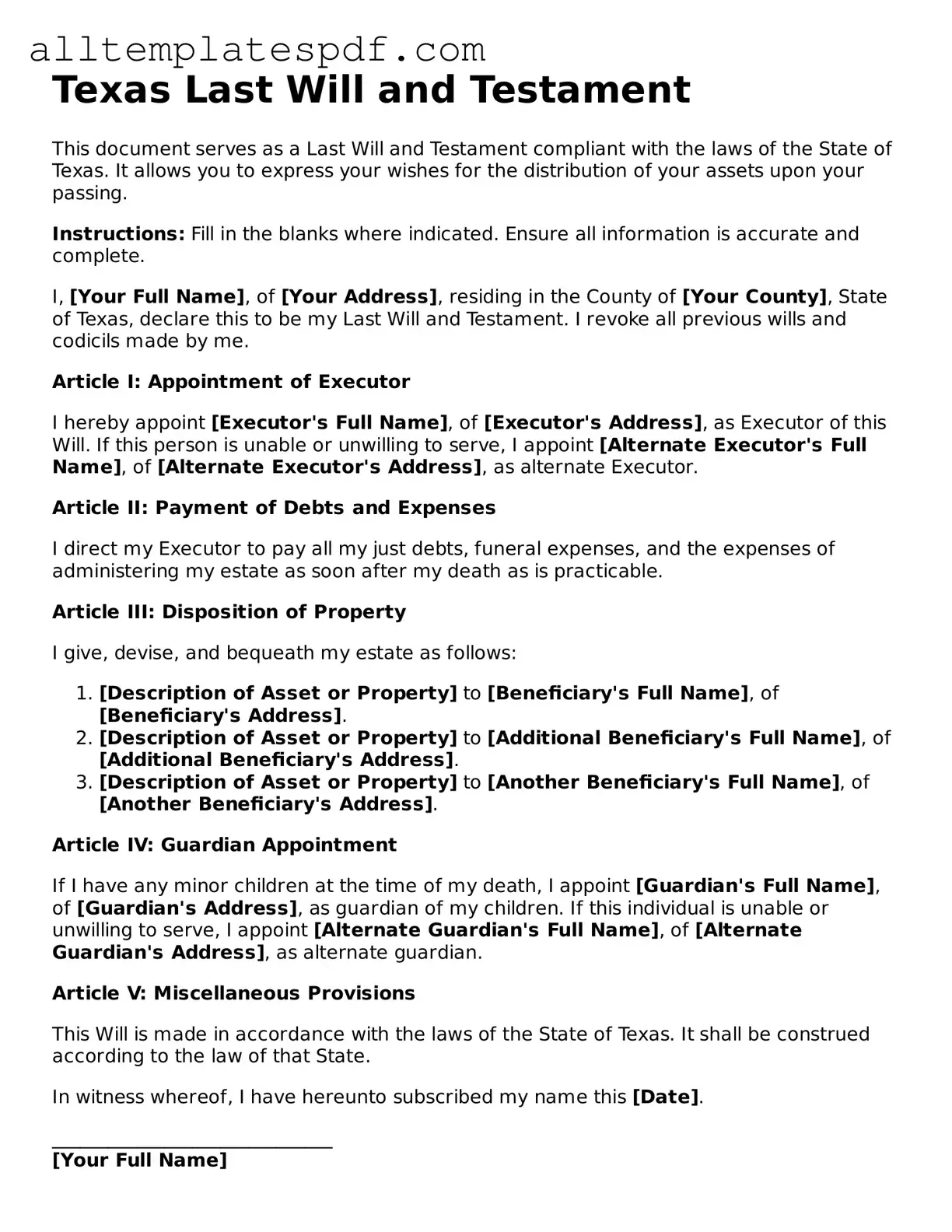Creating a Last Will and Testament is an important step in ensuring your wishes are honored after you pass away. However, many people make common mistakes when filling out this crucial document. One frequent error is failing to clearly identify the beneficiaries. It's essential to provide full names and, if possible, their relationship to you. This clarity helps avoid confusion and potential disputes among family members.
Another mistake is neglecting to sign the document properly. In Texas, a will must be signed by the person creating it, known as the testator. If the will is not signed, or if it is signed in the wrong place, it may not be considered valid. Additionally, having witnesses sign the document is crucial. In Texas, at least two witnesses must be present when you sign your will, and they must also sign the document themselves.
Many individuals also forget to update their wills after significant life events, such as marriage, divorce, or the birth of a child. Failing to revise the will to reflect these changes can lead to unintended consequences. For instance, if you get divorced but do not update your will, your ex-spouse may still inherit from your estate, which may not align with your current wishes.
Another common oversight is not specifying how debts and taxes will be handled. It is important to include instructions on how to settle any outstanding debts or taxes before distributing assets to beneficiaries. Without clear guidance, this process can become complicated and may lead to disputes among heirs.
Lastly, people often overlook the importance of having a backup plan. Designating an alternate executor or guardian for minor children is crucial in case your first choice is unable or unwilling to fulfill their duties. This ensures that your estate is managed according to your wishes and that your children are cared for by someone you trust.
